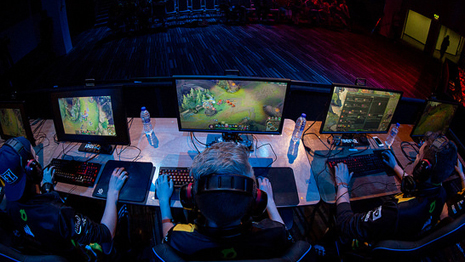Promoted article (contains affiliate links)
With all of the uncertainties surrounding some sporting events, esports has stepped in and provided a new and exciting way to keep fans satisfied.
Competitive gaming drew in around 495 million viewers in 2020, a rise of 11.7% year-on-year, according to Newzoo.
As it stands, more and more sponsors, fans and providers are jumping on the bandwagon to not only provide services or get involved in esports, but also to ensure that the future of the industry is secured.
Some Statistics on Esports
Huge sporting events such as Wimbledon, the Tour de France and the US Open some would say were out-staged by the Fortnite World Cup in 2019, which boasted a $30 million prize pool.
If this does not convince the sceptics, then here are a few more staggering numbers that may just convince them. In 2020, the expected revenue from esports was an estimated $950 million and for 2023 this is set to rise to a phenomenal $1.6 billion. These statistics and forecasts are obviously impressive.
With half a billion global viewers, some say this makes esports more popular than the Rugby World Cup, the NFL as well as the PGA. To add to this, the number of pro gamers is rising all the time, with thousands around the world competing at various levels.
Formula 1 has taken the lead in this space and has provided fans with Virtual Grand Prix races, which has prompted others to follow.
Some Points Esports Hopefuls Need to Look At
For those looking to get involved in esports, there are some things to consider.
Customer Experience: First and foremost, it is vital to put the gamer first. Give them the opportunity to follow or even have opportunities to play against streamers or personalities in the esports world.
This affords customers a unique one-on-one experience and interaction with some of their favourite players, vloggers and more. Engagement is key to increasing participation and views, and platforms like Twitch that encourage this interaction.
Be Creative: In esports, there are no limits, brands and fashion houses can promote their specific products, promotions and competitions. Names such as PUMA, Louis Vuitton and Red Bull feature here.
Knowing which channels are best suited for which brands is imperative since this is how you will be able to maximise and achieve marketing goals.
Identify Your Market: It’s important to reach and know your audience.
Esports fans are typically in the 18 to 34 year old age bracket, but there’s a mix of ages and gaming appeals to a broad range of people.
Get the offering right and gamers will be happy to spend money, but equally there are many streams and games out there that are free too. Stats vary between games, but several reports state around half of gamers are women, though there is a lack of women esports players at the top level.
Knowing this makes it possible to cater to a specific niche market as can be seen at CasinoWings.com.
Provide Incentives: Virtual currencies are one way to go, since customers can spend and buy products on the platform with it. Some games have separate in-game currencies for example.
Also, being able to offer Bits to customers as well as offering playing credits and real-life money are drawcards and encourage players to keep returning to have access to streaming networks and other gaming companies alike.
Partnerships
Partnering with the right networks, gaming companies, sponsors and others like casino sites can be made in the esports industry, and can help boost a product, service, team or league.
Conclusion
The likelihood of physical sports returning to their former glory is uncertain, and it means fans may have to find other ways to satisfy their craving for thrills, excitement and competition. Esports and gaming may be just the ticket.
Promoted article (contains affiliate links)


